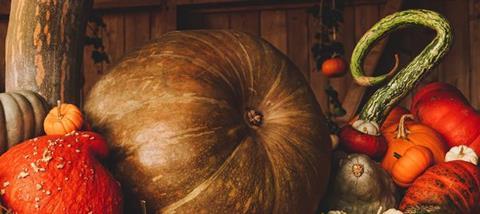
Take a traditional, widely observed, pagan festival. Add a brand new Christian dimension. Borrow some of the pagan elements. Hey presto! You have an annual event which engages with popular culture and becomes a vehicle for expressing Christ’s sovereignty over the whole created order.
The sceptic may well argue that this combining of two practices and beliefs could cause confusion over thought and belief. And of course there is that possibility. However, having adopted this strategy quite well with Christmas, which was deliberately superimposed on pagan midwinter festivals, why not do the same with Halloween? After all, many consider that the Feast of All Hallows and All Saints were placed at their particular position in the year to ‘take over’ the Gaelic, end of harvest festival, Samhain. Many consider consumerism has done a pretty good job of reclaiming Christmas and is now seeking to take over All Hallows, completely forgetting about All Saints. Despite all of its confused messages, Christmas is still a brilliant outreach opportunity for Christians, and one that many of us take advantage of. Why don’t we see Halloween as an opportunity as well?
Opportunities
We see time and again in the Bible accounts of people bringing loved ones to Jesus and his disciples who have been possessed by evil spirits (Mark 1:21–28; Mark 9:14-32 or Acts 16:16-21 are just a few examples). So we can’t deny that things of darkness don’t exist, but the stories don’t end there. Rather than letting darkness conquer, we see Jesus overcome these spirits, commanding them to leave the people that they are occupying. This is something to be celebrated!
If anything, Halloween provides us with the opportunity to share the gospel more fully. Often at Christmas we find the festivities and our services centring on God’s wonderful and perfect gift of his son. However, rarely do we continue the story of explaining that Jesus was born so that he could make the ultimate sacrifice, dying for our sins.
At Halloween, we have the opportunity to explain the full gospel more easily, discussing things of darkness and the miracle of God’s light. All the captivating fairy tales of our childhood contain evil – ghosts, witches, wicked queens and jealous rulers – and yet we read these stories with our children, helping them to explore ideas of a scary and dangerous world in safety. But we shouldn’t forget the second half of the story, that of All Saints Day: death is not the end, but a glorious future living with Christ, as depicted at the end of the book of Revelation. If we deprive children of this narrative, then we are in danger of depriving them of the core of the gospel.
Building bridges
We’ve recently been doing some reflecting at Scripture Union about how the context in which we are operating in has changed. Next year we celebrate our 150th birthday and much has changed over those years. For a children and youth mission charity such as us, one key change is the realisation that somewhere in the region of only five per cent of children and young people has any meaningful engagement with a church today. This is drastically different to 1867 when we first began, as most children were attending Sunday schools. The Church needs to find ways of creating new bridges into society without that regular contact point.
For Scripture Union, a significant moment in our establishment was in 1868 when Josiah Spiers, holidaying in Llandudno, found himself inadvertently leading the first British beach mission. The significance of this event was that rather than waiting for children to come to church, Josiah brought the love of Christ to the children. Today the Church needs to rediscover that ability to make Christ known normally and naturally in the public place rather than seeking to remain within our comfort zone within the church building.
At its simplest Halloween presents an easy point of connection. Secularised, commercialised, paganised though it may be, it is still a place of connection where god’s love can be declared. Unless we are willing to venture into the secularised, commercialised and paganised world we risk withdrawing into ‘safe’ little huddles which are increasingly isolated from the world God made and came to save.
To give a concrete example, let’s travel to Gloucestershire, where I am part-time Anglican vicar of a group of three churches. There are rarely children in church on Sunday, but there is a village school of 40 pupils next door to our biggest church. So last year our light party was very low key, taking place on the Sunday evening prior to the second half of the autumn term. There was a barbecue, some fireworks, a wide game involving hunting for human pumpkins, a short talk and distribution of booklets. We were joined by about 30 children and another 30 adults, all non-church people. This year we’re planning on building on the success of last year’s event as part of an integrated programme working towards a regular midweek service for children and parents. We have taken the view that our traditional Sunday morning service is not the natural destination for the children and their families, and that we need to be tailoring a form of presentation and worship that is shaped to their needs.
Like Remembrance Sunday and Mothering Sunday, Halloween provides a touch point in many communities which the church has the opportunity to use carefully and thoughtfully. To use Halloween in this way may raise a few eyebrows, but for the sake of the gospel, and in order to reach those far away from the Church, it is a risk we believe is worth taking.























